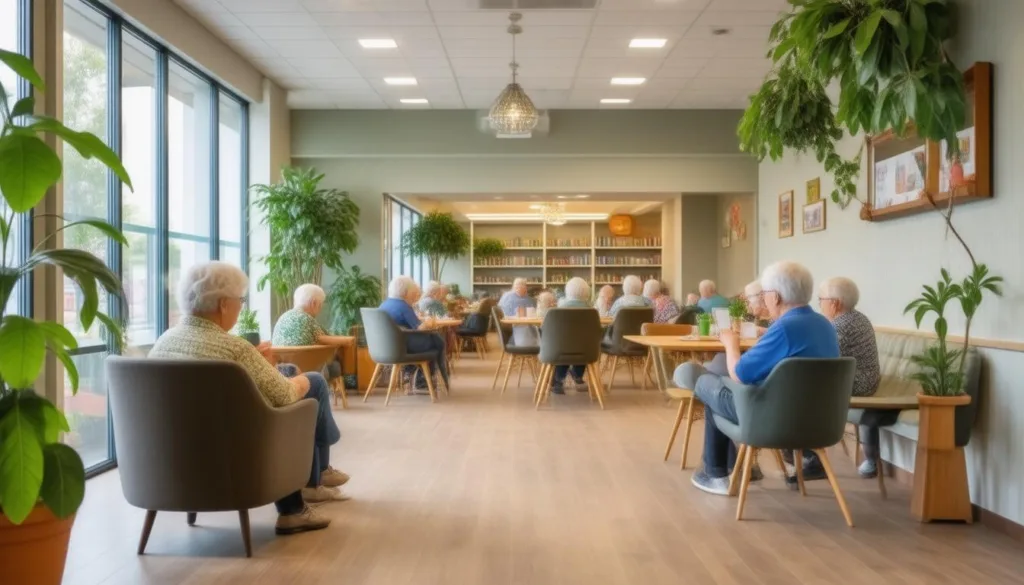Revolutionizing Elderly Care: How Small Nursing Homes Redefine Senior Living

Revolutionizing Elderly Care: How Small Nursing Homes Redefine Senior Living
In a world where traditional nursing homes often resemble factories more than homes, small nursing homes are emerging as a new model of elder care. The journey of Mary Nicodemus, a resident of a small nursing home in Toledo, Ohio, exemplifies this shift in approach. With only ten residents, caregivers are redefining how we think about elderly living, prioritizing individualized care over the conventional conveyor-belt system of larger facilities.
The Human Touch in Small Nursing Homes
As Mary enjoys her coffee in the morning, the care she receives is the result of a focused approach: fewer residents mean more time for caregivers to develop meaningful relationships. According to Dena Webb, a caregiver at Mary’s home, the luxury of time allows staff to cater to the unique preferences of each elder. This contrasts sharply with larger facilities, where residents often follow strict schedules that fail to account for personal needs or preferences.
In smaller nursing homes, caregivers like Dena aren’t just there to administer care; they actively engage with residents, understanding their likes and dislikes, and adjusting meal plans accordingly. For example, while some residents may dislike eggs, others can enjoy waffles without a second thought. This level of customization transforms the dining experience from a simple meal into a personalized event that resonates deeply with residents.
Freedom Through Flexibility in Care
One of the main advantages of small nursing homes is their flexibility. Instead of forcing residents into a regimented routine, caregivers adapt to the needs of the individuals they serve. This nurturing environment fosters a sense of community that many larger institutions struggle to replicate. Residents don’t just have caregivers; they have friends ready to help at a moment’s notice.
As Jill Wilson, President and CEO of Otterbein Senior Lifestyle Choices notes, the goal is to liberate residents from the traditional perceptions of elder care. When seniors are supported in a way that respects their individuality, it not only enhances their quality of life but also allows for a more fulfilling version of aging.
A Sustainable Model of Care
The Green House model, as exemplified in the Toledo home, is rapidly gaining traction across the United States. This approach prioritizes frontline care over bureaucracy, which can sometimes bog down larger care facilities. By having fewer residents, homes can allocate resources more effectively, focusing funds where they are most impactful—on the caregivers who spend time with the elders.
Critically, this model is designed to be affordable, ensuring that quality care isn’t just available for those with deep pockets. Many residents rely on Medicaid, dispelling the myth that specialized care is reserved for the wealthy.
Interestingly, despite the smaller scale of these homes, they have proven resilient even during unprecedented challenges like the COVID-19 pandemic. With their limited number of rooms and consistent staff, smaller nursing homes reported significantly fewer COVID cases compared to their larger counterparts.
Embracing the Model of the Future
As Ontario considers a major expansion of long-term care facilities, looking toward the smaller, community-oriented models offers promising solutions. The insights gained from initiatives like those in Toledo highlight the potential for reimagining elder care. Families are often faced with difficult decisions about care for their loved ones, and the inviting atmosphere of smaller homes can ease some of that burden.
For families and seniors seeking a more nurturing, personalized approach to elder care, the evolution of small nursing homes provides not just a glimmer of hope but a clear pathway toward a better living experience.
Ultimately, the revolution in elder care harkens back to a fundamental truth: everyone deserves to feel at home, even while receiving care. With innovative models like the Green House approach, the elderly can live out their golden years in dignity, comfort, and genuine connection. As the landscape of care continues to evolve, adapting these principles offers a brighter future for those who have given so much in life.
With over 6 million seniors in Canada and 93% preferring to age at home, the need to bring quality home care to seniors is urgent. Families want peace of mind, and caregivers deserve respect and support.
This isn’t just a marketplace—it’s a movement for better care. Join our marketplace today and receive quality home care matches in minutes.
